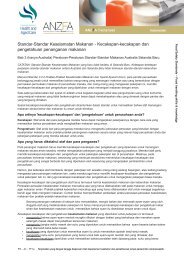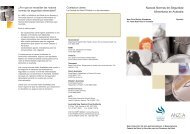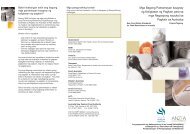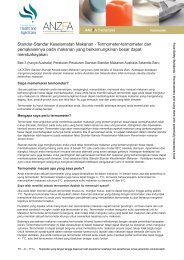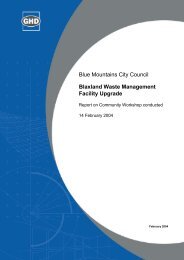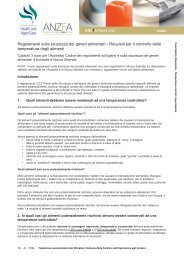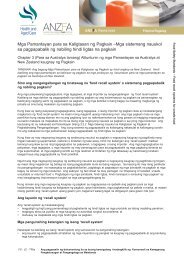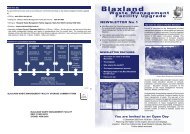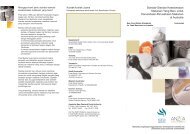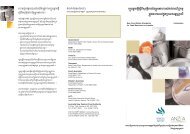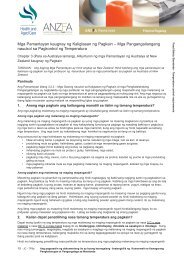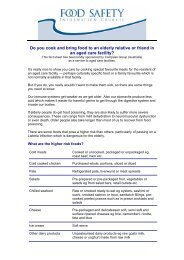Katoomba Charrette Outcomes Report - Blue Mountains City Council
Katoomba Charrette Outcomes Report - Blue Mountains City Council
Katoomba Charrette Outcomes Report - Blue Mountains City Council
You also want an ePaper? Increase the reach of your titles
YUMPU automatically turns print PDFs into web optimized ePapers that Google loves.
<strong>Katoomba</strong> <strong>Charrette</strong> <strong>Report</strong> & Town Centre Strategy<br />
intersections on the preceding aerial photograph of <strong>Katoomba</strong>’s Town Centre. All of these<br />
intersection ‘barriers’ were dealt with in the <strong>Charrette</strong> (see Section 8.4).<br />
Parke, Lurline Streets and other ‘temptations to speed’ act as barriers to pedestrian access<br />
across and along them. Parke and Lurline Streets are quite wide; their design and contexts<br />
induce speeding far faster than their posted speeds. Not only are their carriageways quite<br />
wide, they also have parking restrictions along much of their lengths, which limit important<br />
parking capacity for the Town Centre and tend to encourage cars to speed even faster. This<br />
conditions makes these streets unpleasant and to some extent unsafe to walk or cycle along or<br />
to cross them, and thus they act as ‘barriers’ to their being crossed.<br />
Limited Parking in and near the Top of Town Limits Vehicular Access to It<br />
Limited car parking in and near the Top of Town can be interpreted as a ‘barrier’, hurting its<br />
vehicular access and business vitality. See Section 8.8.1 for <strong>Charrette</strong> proposals to address this<br />
difficulty.<br />
Lanes in the Town Centre<br />
The many under-used small lanes associated with <strong>Katoomba</strong> Street often seem unsafe to<br />
pedestrians (especially at night) and act too often as barriers to pedestrian access. The<br />
<strong>Charrette</strong> proposed improvements to these lanes, as explained in Section 8.3.2.<br />
4.3.5 Bypasses<br />
<strong>Katoomba</strong> Street, the original heart of town, used to be better connected to its vicinity than it is<br />
now. To some extent it has been bypassed, which seems to be part of its problems.<br />
Prior to changes to the Great Western Highway in the 1980’s, traffic from Sydney followed the<br />
alignment of the present Civic Place, crossed the railway at grade right at the station at<br />
<strong>Katoomba</strong> Street, and then headed west on Main Street to Bathurst Road. While little can be<br />
done now to redress this major change, the business decline of <strong>Katoomba</strong> Street may be<br />
attributed in part to this ‘bypassing’ of the heart of town by the Great Western Highway.<br />
Yeoman’s Bridge, which solved the perceived dangers of an at-grade vehicular railway<br />
crossing, also bypasses <strong>Katoomba</strong> Street; most traffic now heads south along Parke Street,<br />
especially to access the Coles and Jewels shopping centres. Much traffic heading for Echo<br />
Point, which might in the past have taken <strong>Katoomba</strong> Street, also bypasses it via Lurline Street.<br />
Thus, while originally <strong>Katoomba</strong> Street was the main north-south artery for town, it has now<br />
been bypassed for most traffic, making it harder for <strong>Katoomba</strong> and Main Street businesses to<br />
compete.<br />
4.4 How the Public Realm Feels & Functions: Great Potential But<br />
Tattered & Not Synergising<br />
4.4.1 Ordinary Streetscape & Dilapidated Building Facades<br />
Despite some recent well-intended improvements of planting and some seating, the<br />
streetscape of the Town Centre is quite ordinary, and many of the building facades are<br />
becoming dilapidated. This condition can reflect badly on neighbouring buildings and<br />
18



